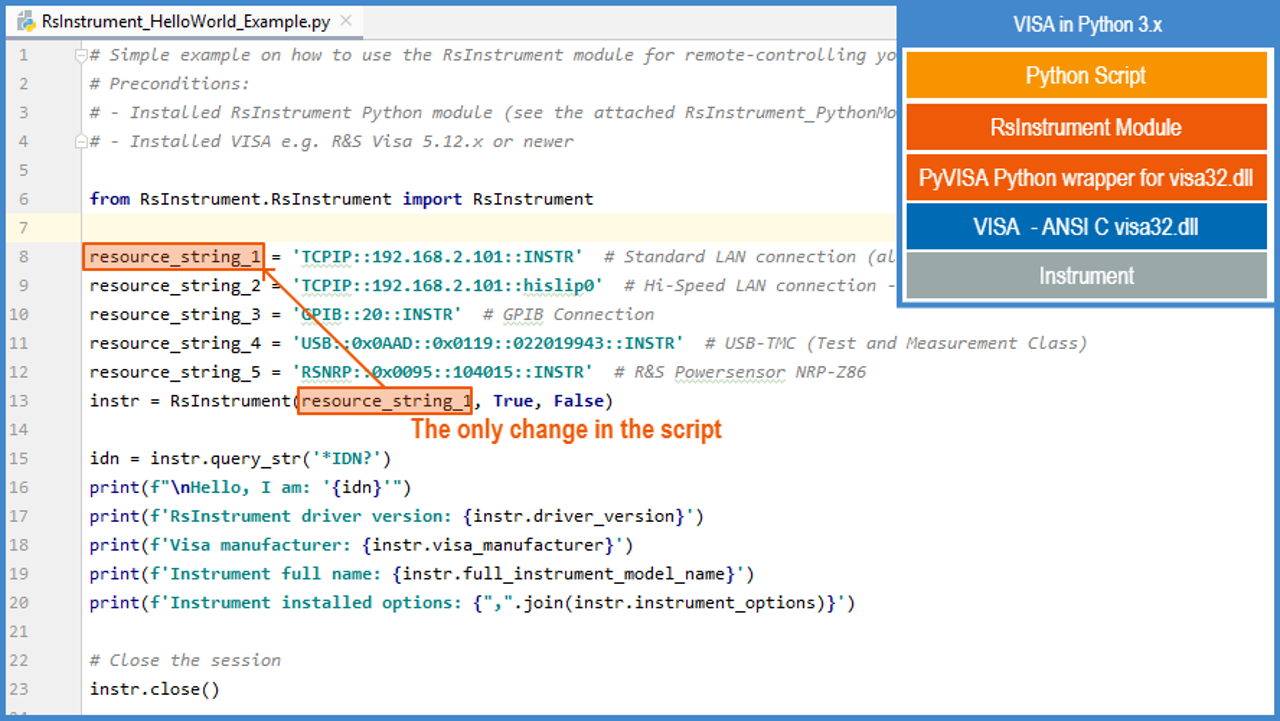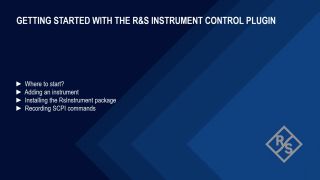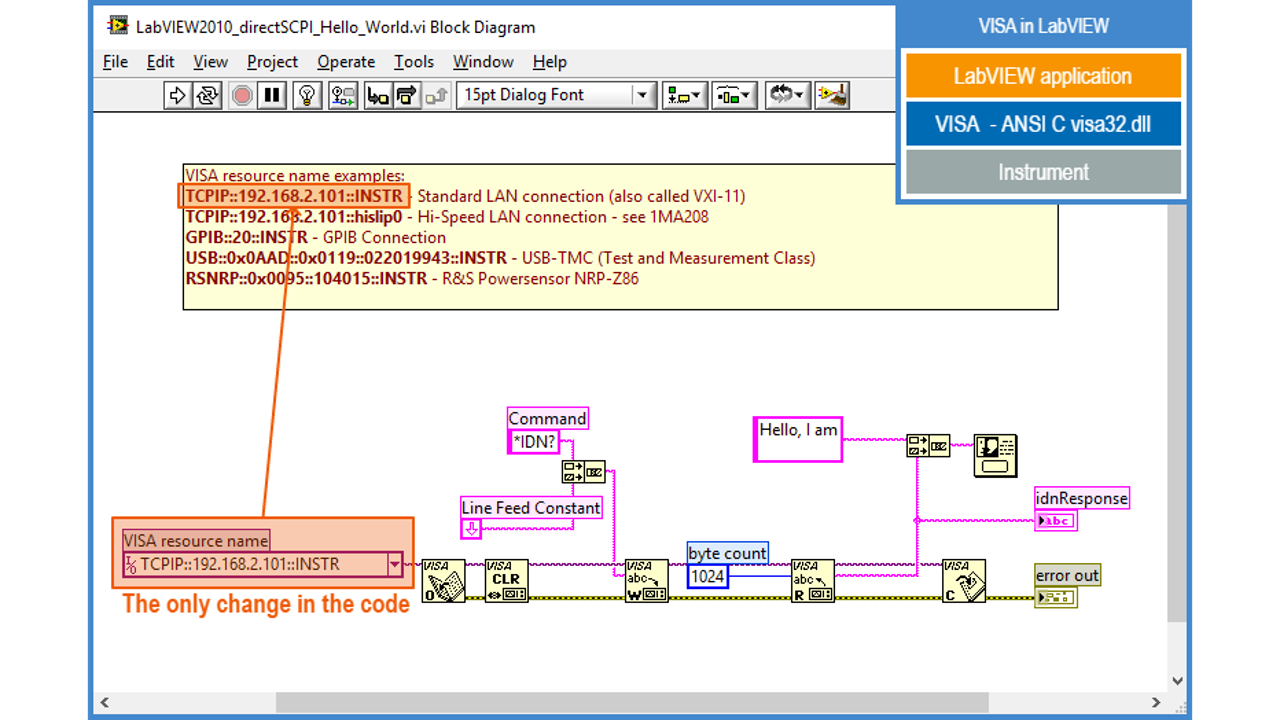4. VISA in Programming Languages
There are many programming languages offering the possibility to remotely control Test & Measurement instruments.
In this guide, we focus on:
- Python in PyCharm
- MATLAB®
- C# in Visual Studio
- LabVIEW™
- ANSI-C in LabWindows/CVI™
In the following sub-chapters, we discuss advantages and disadvantages of each language. Included ready-to-use example for each of these languages should help you getting started. The screenshots emphasize simple code change in case you change physical connection to your instrument. They also show used layers between the application and VISA.
An installation of VISA is a precondition for all the examples below.









